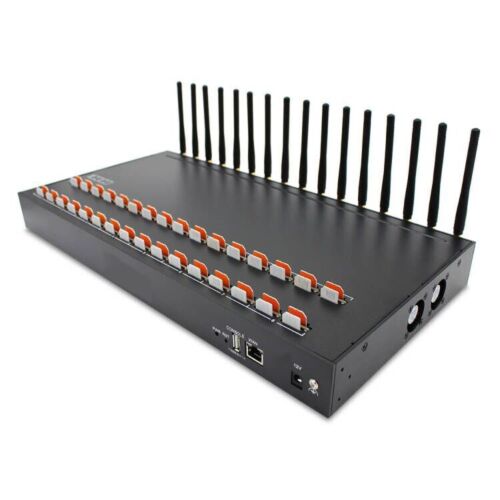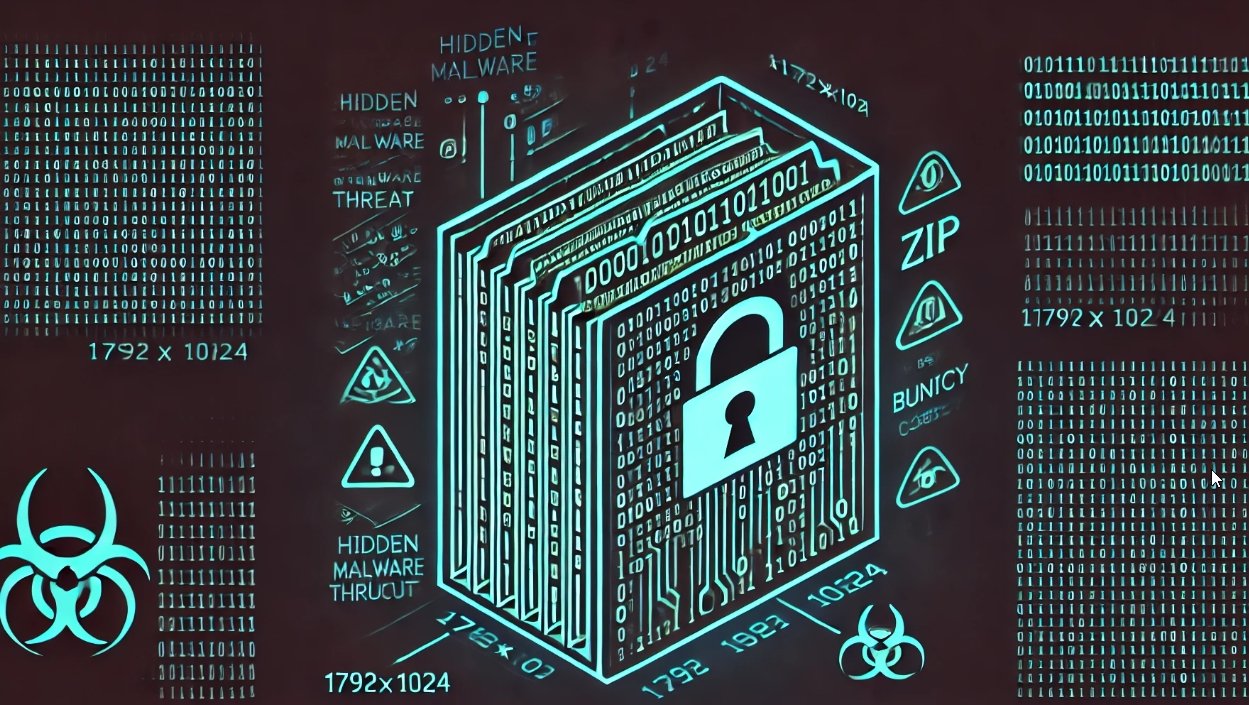In what appears to be a highly sophisticated cyber-physical operation targeting Hezbollah, new revelations have emerged about the potential involvement of Israel’s elite cyber intelligence unit, Unit 8200, in a covert operation designed to remotely sabotage Hezbollah’s communications and infrastructure. This operation, allegedly in development for over a year, underscores the growing convergence of cyber capabilities with physical sabotage in modern conflict.
According to a Western security source cited by Reuters, Unit 8200 played a crucial role in the technical side of the operation, specifically testing methods to embed explosive materials within Hezbollah’s manufacturing process. These revelations raise significant questions about how an organization’s communications infrastructure—seemingly as benign as pagers—could be weaponized to create widespread destruction.
Unit 8200’s Role: From Cyber Intelligence to Physical Sabotage
Unit 8200 is well-known as Israel’s military unit responsible for cyber operations, including intelligence gathering, signal interception, and electronic warfare. In this case, its role went beyond traditional cyber espionage, venturing into the realms of cyber-physical sabotage. The technical aspects of the operation, including how the unit tested the feasibility of inserting explosives into pagers and similar devices, suggest a coordinated effort that bridges the gap between digital intelligence and kinetic action.
Hezbollah, a Lebanon-based political and militant group, has long been a target of Israeli intelligence due to its regional activities. This operation, however, takes a more direct and destructive approach, hinting at Israel’s willingness to use cyber warfare not just for surveillance but for real-world effects, similar to previous high-profile operations like the Stuxnet worm attack on Iran’s nuclear program in 2010.

Why Pagers? An Unexpected Tool of Sabotage
Hezbollah, like other militant and political organizations, may still use pagers for several strategic reasons, despite the availability of more modern communication technologies. Here are some key reasons why they might still rely on pagers:
1. Security and Simplicity
Pagers operate on relatively simple, often analog, technology, which can make them harder to hack or intercept compared to modern smartphones, which are connected to the internet and vulnerable to a wide range of cyberattacks. Pagers do not have the same attack surface as smartphones, which are susceptible to malware, tracking, and eavesdropping.
- Less susceptible to modern hacking methods: Pagers don’t connect to the internet or use GPS, so many types of remote exploits that affect smartphones don’t apply to pagers.
2. Limited Tracking
Many modern communication devices, such as smartphones, can be easily tracked using GPS, cell tower triangulation, or even metadata analysis. Pagers, on the other hand, do not transmit the location of the user in the same way. This makes it harder for adversaries to track Hezbollah members based on their communications.
- Reduced location tracking risks: Using pagers could reduce the likelihood of being tracked by hostile state actors or surveillance programs.
3. Reliable in Low-Tech or Isolated Environments
Pagers can be more reliable in environments where cellular coverage is poor or non-existent, such as in rural or mountainous regions, where Hezbollah often operates. Pagers use radio waves and can operate on different frequencies, providing an additional layer of communication in areas where modern networks may be less effective.
- Effective in remote or war-torn areas: Pagers may still work in areas where cell towers are damaged or where internet access is restricted.
4. Communication Control
Pagers typically allow for one-way communication, where messages are sent to the receiver but the receiver cannot respond using the same device. This one-way nature can be advantageous in certain military or clandestine operations where leaders want to control communications and prevent individuals from sending unsecured messages.
- Controlled and secure: Pagers allow top-down messaging without the risk of back-and-forth communication, reducing operational exposure.
5. Legacy Systems
Hezbollah may be using pagers because they have been part of their communication infrastructure for decades. While the group is known to use more modern technologies, transitioning away from legacy systems may involve risks, especially if they believe those older systems provide a security advantage due to their simplicity.
- Familiarity with older technology: Long-standing communication systems are sometimes kept in place due to operational familiarity and effectiveness.
6. Avoiding Internet-Based Surveillance
Modern communication devices are often connected to the internet, where they can be more easily intercepted or monitored by intelligence agencies through techniques like deep packet inspection, metadata collection, or malware. By using pagers, Hezbollah could be attempting to avoid internet-based surveillance.
- Avoiding surveillance: Pagers are not connected to the internet, reducing the risk of cyber espionage conducted by sophisticated intelligence agencies like the NSA or Mossad.
7. Low Profile
Using older technologies like pagers can help Hezbollah avoid drawing attention from surveillance operations that focus on more modern communications like encrypted apps (e.g., Signal or WhatsApp) or satellite communications. Intelligence agencies may be more focused on monitoring high-tech methods, whereas pagers may fly under the radar.
- Less obvious target: Pagers could be overlooked in surveillance efforts focusing on more modern communication devices.
8. Cost-Effective
Pagers are generally cheaper and easier to maintain than complex communication systems like satellite phones or encrypted smartphones. For a group like Hezbollah, operating under financial constraints or sanctions, using inexpensive communication methods can be a practical choice.
- Lower operational costs: Pagers are affordable and can be deployed easily, making them useful in regions with limited financial resources.
9. Resilient in Jamming Situations
In a conflict zone, adversaries may use electronic warfare techniques such as jamming or disrupting communication networks. Pagers, operating on different frequencies than typical cell phones or internet communications, may be more resilient to such tactics.
- Resistant to jamming: Pagers can continue functioning in environments where modern communication networks are disrupted.
10. Avoidance of Mass Data Collection
Governments and intelligence agencies often collect and store massive amounts of data from smartphones, including location, call logs, and internet browsing habits. Pagers generate much less metadata, reducing the amount of information an adversary can collect.
Less metadata generated: Pagers transmit fewer digital footprints, making it harder to conduct comprehensive surveillance or data collection on Hezbollah’s operations.However, this operation suggests that even basic communication devices can be exploited if the right level of technical access is gained. By embedding explosive materials into these devices, Unit 8200 and Israeli intelligence could effectively turn Hezbollah’s communication network into a time bomb.
Technical Approach: Cyber-Physical Sabotage in Action
This report suggests that Israel’s Unit 8200, which is a division of the Israeli military’s Intelligence Corps, played a significant role in a covert operation targeting Hezbollah. The information provided sheds light on an operation that involved more than just traditional cyber espionage; it also suggests a complex, long-term plan involving sabotage at the technical level.
Here are some key takeaways based on the information:
1. Unit 8200’s Involvement
Unit 8200 is Israel’s elite military intelligence unit that specializes in cyber intelligence, signal intelligence (SIGINT), and other forms of electronic warfare. Its role in this operation appears to be focused on the technical aspects of sabotage, particularly:
- Testing methods of inserting explosive materials into Hezbollah’s manufacturing process, which suggests that they were targeting a specific element of Hezbollah’s infrastructure, possibly weapons production or supply chains.
- Developing technical tools and techniques to infiltrate Hezbollah’s systems, infrastructure, or logistics without detection.
This points to cyber-physical warfare—a combination of cyber techniques used to enable physical sabotage, a method frequently used in high-stakes operations where cyber and physical worlds intersect. It shows that Unit 8200’s cyber expertise extends beyond digital operations and can support kinetic operations, such as the planting of explosives.
2. Operation Planning
The operation, which was reportedly over a year in the making, indicates significant planning and intelligence gathering. This timeframe is typical for sophisticated military and intelligence operations, where the following processes would take place:
- Intelligence gathering: Unit 8200 and other intelligence agencies likely spent a significant amount of time monitoring Hezbollah’s activities, identifying vulnerabilities in their supply chain or manufacturing processes.
- Operational testing: The source mentions that Unit 8200 was involved in testing how they could infiltrate Hezbollah’s manufacturing process, which likely involved cyber-technical simulations to determine the most effective method to introduce the explosives.
3. Cyber-Physical Sabotage
The operation described appears to be a form of cyber-physical sabotage, where the goal is to insert physical damage through a cyber or technical method:
- Inserting explosive materials: This suggests that Unit 8200’s expertise was used to covertly infiltrate Hezbollah’s supply chain or production facilities, possibly via remote or physical means. For example, they could have exploited vulnerabilities in the digital systems controlling manufacturing equipment to introduce or trigger explosives at key points.
- Technical disruption: Besides the physical sabotage, there may have been other technical disruptions involved, such as interference with communication networks, supply chain coordination, or command-and-control systems used by Hezbollah.
4. Precedent for Similar Operations
Israel has a history of using cyber-physical operations in its conflicts, including the infamous Stuxnet attack on Iran’s nuclear program, where malware was used to sabotage centrifuges. Similarly, the operation targeting Hezbollah likely relied on a combination of cyber skills (provided by Unit 8200) and physical sabotage (explosives) to achieve its objectives.
5. Strategic Impact
The long-term nature of the operation and its target—Hezbollah’s manufacturing process—implies that the intended impact was strategic rather than tactical. Disrupting Hezbollah’s ability to produce or transport weapons, particularly rockets and other munitions, would degrade their operational capacity in the long run.
Overcoming Obstacles: Technical and Logistical Hurdles
A cyber-physical operation of this magnitude would face considerable technical and logistical challenges. To pull off such a complex sabotage, Unit 8200 had to address several potential issues:
- Secrecy and Stealth: Any modifications to the pagers had to remain undetected by Hezbollah throughout their operational lifespan. This would require careful planning to ensure that the explosives and detonators were well concealed within the devices.
- Signal Interference: Jamming or signal interference from Hezbollah or their allies could disrupt the operation. The attackers would need to ensure the reliability of their remote detonation method, possibly using redundant activation methods like both RF and time-based triggers.
- Supply Chain Control: Embedding explosive materials and the necessary control hardware within the pagers without detection would likely require collaboration between multiple agencies, with Unit 8200 providing technical expertise on how to effectively weaponize these devices.
Here are some key takeaways based on the information:
1. Unit 8200’s Involvement
Unit 8200 is Israel’s elite military intelligence unit that specializes in cyber intelligence, signal intelligence (SIGINT), and other forms of electronic warfare. Its role in this operation appears to be focused on the technical aspects of sabotage, particularly:
- Testing methods of inserting explosive materials into Hezbollah’s manufacturing process, which suggests that they were targeting a specific element of Hezbollah’s infrastructure, possibly weapons production or supply chains.
- Developing technical tools and techniques to infiltrate Hezbollah’s systems, infrastructure, or logistics without detection.
This points to cyber-physical warfare—a combination of cyber techniques used to enable physical sabotage, a method frequently used in high-stakes operations where cyber and physical worlds intersect. It shows that Unit 8200’s cyber expertise extends beyond digital operations and can support kinetic operations, such as the planting of explosives.
2. Operation Planning
The operation, which was reportedly over a year in the making, indicates significant planning and intelligence gathering. This timeframe is typical for sophisticated military and intelligence operations, where the following processes would take place:
- Intelligence gathering: Unit 8200 and other intelligence agencies likely spent a significant amount of time monitoring Hezbollah’s activities, identifying vulnerabilities in their supply chain or manufacturing processes.
- Operational testing: The source mentions that Unit 8200 was involved in testing how they could infiltrate Hezbollah’s manufacturing process, which likely involved cyber-technical simulations to determine the most effective method to introduce the explosives.
3. Cyber-Physical Sabotage
The operation described appears to be a form of cyber-physical sabotage, where the goal is to insert physical damage through a cyber or technical method:
- Inserting explosive materials: This suggests that Unit 8200’s expertise was used to covertly infiltrate Hezbollah’s supply chain or production facilities, possibly via remote or physical means. For example, they could have exploited vulnerabilities in the digital systems controlling manufacturing equipment to introduce or trigger explosives at key points.
- Technical disruption: Besides the physical sabotage, there may have been other technical disruptions involved, such as interference with communication networks, supply chain coordination, or command-and-control systems used by Hezbollah.
4. Precedent for Similar Operations
Israel has a history of using cyber-physical operations in its conflicts, including the infamous Stuxnet attack on Iran’s nuclear program, where malware was used to sabotage centrifuges. Similarly, the operation targeting Hezbollah likely relied on a combination of cyber skills (provided by Unit 8200) and physical sabotage (explosives) to achieve its objectives.
5. Strategic Impact
The long-term nature of the operation and its target—Hezbollah’s manufacturing process—implies that the intended impact was strategic rather than tactical. Disrupting Hezbollah’s ability to produce or transport weapons, particularly rockets and other munitions, would degrade their operational capacity in the long run.
Strategic and Geopolitical Implications
The long-term strategic implications of this operation are significant. By sabotaging Hezbollah’s communication infrastructure, Israel could severely disrupt the group’s operational capabilities, particularly in the realm of military communications. In addition, this attack represents a shift in how cyber warfare is being used by state actors to directly impact physical assets and human targets.
This operation also demonstrates the increasing complexity of cyber-physical warfare. While cyberattacks have traditionally focused on disrupting digital systems, this operation shows how cyber techniques can be used to orchestrate kinetic attacks. The ability to remotely control explosives embedded in communication devices marks a dangerous evolution in cyber conflict, where the line between cyberattacks and traditional military operations is becoming increasingly blurred.
Remotely detonating explosive materials in multiple devices like pagers all at once
Remotely detonating explosive materials in multiple devices like pagers all at once would be a highly sophisticated operation, involving a combination of physical sabotage, technical expertise, and cyber capabilities. Here’s a detailed breakdown of how such an operation might be theoretically executed:
1. Infiltration and Modification of Devices
For this type of operation, the attacker would first need to infiltrate the manufacturing or supply chain process of the pagers to implant the necessary hardware or software modifications. This could be achieved through several techniques:
- Supply Chain Compromise: Attacking the point at which the pagers are manufactured, modified, or distributed. This could involve inserting a small, hard-to-detect explosive device into each pager or embedding malicious firmware capable of triggering the explosion.
- Technical Sabotage: The pagers might have been outfitted with a detonator linked to the device’s internal systems, possibly by compromising their circuit boards, batteries, or communication components.
2. Remote Control and Activation
Once the explosive devices have been embedded in the pagers, the attacker would need a method to remotely activate them. Several strategies could be employed here:
- Radio Frequency (RF) Activation: The pagers could be modified to receive a specific radio frequency signal, which would serve as a trigger to detonate the embedded explosives. The attacker could use a high-powered RF signal sent across the relevant frequency bands that all modified pagers are tuned to, causing simultaneous detonation.
- Cellular or Network-Based Activation: If the pagers are connected to a cellular or satellite network (or communicate over radio waves), the attacker could send a command via these networks to trigger all the explosives at once. For example, a coded message sent to the pagers could instruct them to detonate.
- SS7 Vulnerabilities: If the pagers communicate over cellular networks, exploiting SS7 vulnerabilities could allow the attacker to send a specific SMS or paging signal that would trigger all devices.
- Embedded Firmware Command: The attacker could also modify the pager’s firmware to include a backdoor that responds to a specific signal or code. When this signal is sent to the pagers, the firmware would execute the command to trigger the detonation mechanism.
3. Coordinating Simultaneous Detonation
To ensure all the explosive materials detonate simultaneously, the attacker would need a precise coordination mechanism:
- Global Signal: The attacker could send a signal over a broad geographic area (via RF, cellular, or satellite) that all pagers would receive at the same time. This could be done through a pre-configured broadcast message or signal that is sent to all devices simultaneously.
- Time-Based Triggers: If a remote signal is not feasible, the pagers could be programmed to detonate at a specific, pre-determined time. This would require coordination between the firmware/hardware modifications and a reliable internal clock on the devices. Once the time is reached, the pagers would simultaneously activate the explosive materials.
- Network Broadcast: Using a satellite or cellular network to send a broadcast message that reaches all targeted pagers within a region at once could ensure synchronized detonation. This method is similar to how some military-grade weapons or devices are remotely detonated.
4. Challenges and Considerations
Pulling off such an operation would require overcoming significant technical, logistical, and security challenges:
- Stealth and Secrecy: The modifications to the pagers would need to be subtle enough to avoid detection during manufacturing, distribution, or use. The explosive materials would also have to be compact and well-hidden.
- Signal Jamming: There could be the risk that communications networks (like cellular or radio) might be jammed or interfered with, so the attacker would need a reliable means of transmitting the detonation signal.
- Network Dependencies: If the pagers rely on a third-party network (cellular or satellite), the attacker would need to ensure that network access is available when the detonation is triggered.
- Synchronization: The pagers would need to be synchronized to ensure simultaneous detonation. Using a centralized control mechanism, such as a coordinated signal or a time-based trigger, would be crucial.
5. Potential Methods of Attack
Let’s break down a few specific methods that could be employed to remotely detonate the pagers:
- RF Command Triggering: This is a common method used in remote detonation devices like IEDs (Improvised Explosive Devices). If the pagers are configured to receive a certain frequency or signal, a powerful RF signal could be sent to activate them.
- SMS Triggering: If the pagers are linked to cellular networks, sending a specially crafted SMS with a hidden command could trigger the devices. This would require compromising the pager network and understanding how to exploit the communication protocols used by the pagers.
- Malicious Firmware: Embedding malicious code into the pagers’ firmware that listens for a specific signal (via SMS, pager network, or RF) could allow for remote detonation. This would require the attacker to compromise the supply chain and modify the firmware during manufacturing or distribution.
6. Historical Precedents
There are precedents for similar cyber-physical sabotage operations, although not exactly on the scale of detonating pagers:
- Stuxnet (2010): The Stuxnet worm was designed to sabotage Iran’s nuclear enrichment facility by causing physical damage to centrifuges. It’s a prime example of how cyber operations can create physical effects.
- IEDs (Improvised Explosive Devices): Throughout conflicts in the Middle East, IEDs have been detonated remotely using a variety of signals, from RF to cellular networks. These methods demonstrate how attackers can coordinate remote detonation of multiple devices at once.
Conclusion: A New Frontier in Cyber Warfare
To remotely detonate explosive materials hidden inside pagers simultaneously, an attacker would need to:
- Compromise the manufacturing or supply chain to implant explosives and control mechanisms.
- Establish a remote trigger via RF, cellular, or network-based signals that all pagers would receive.
- Synchronize the detonation either through a time-based trigger or simultaneous remote activation.
- Overcome technical challenges related to security, signal interference, and detection.
The alleged involvement of Unit 8200 in the technical development of this operation illustrates the fusion of cyber intelligence, electronic warfare, and physical sabotage in modern warfare. This operation against Hezbollah shows how vulnerable even seemingly low-tech devices can be when sophisticated actors like Unit 8200 are involved. The idea that pagers, once a symbol of outdated technology, could become tools of sabotage highlights how even the most unlikely objects can be weaponized.
With more details likely to emerge, this operation represents a new chapter in the escalating cyber-physical warfare between state actors and militant groups. As nations invest more heavily in both cyber capabilities and covert operations, the tools and tactics of conflict are rapidly evolving, posing new challenges to global security and stability.
This operation serves as a stark reminder: in the digital age, even the simplest devices can become part of a sophisticated battlefield.

Cyber Security Researcher. Information security specialist, currently working as risk infrastructure specialist & investigator. He is a cyber-security researcher with over 25 years of experience. He has served with the Intelligence Agency as a Senior Intelligence Officer. He has also worked with Google and Citrix in development of cyber security solutions. He has aided the government and many federal agencies in thwarting many cyber crimes. He has been writing for us in his free time since last 5 years.










